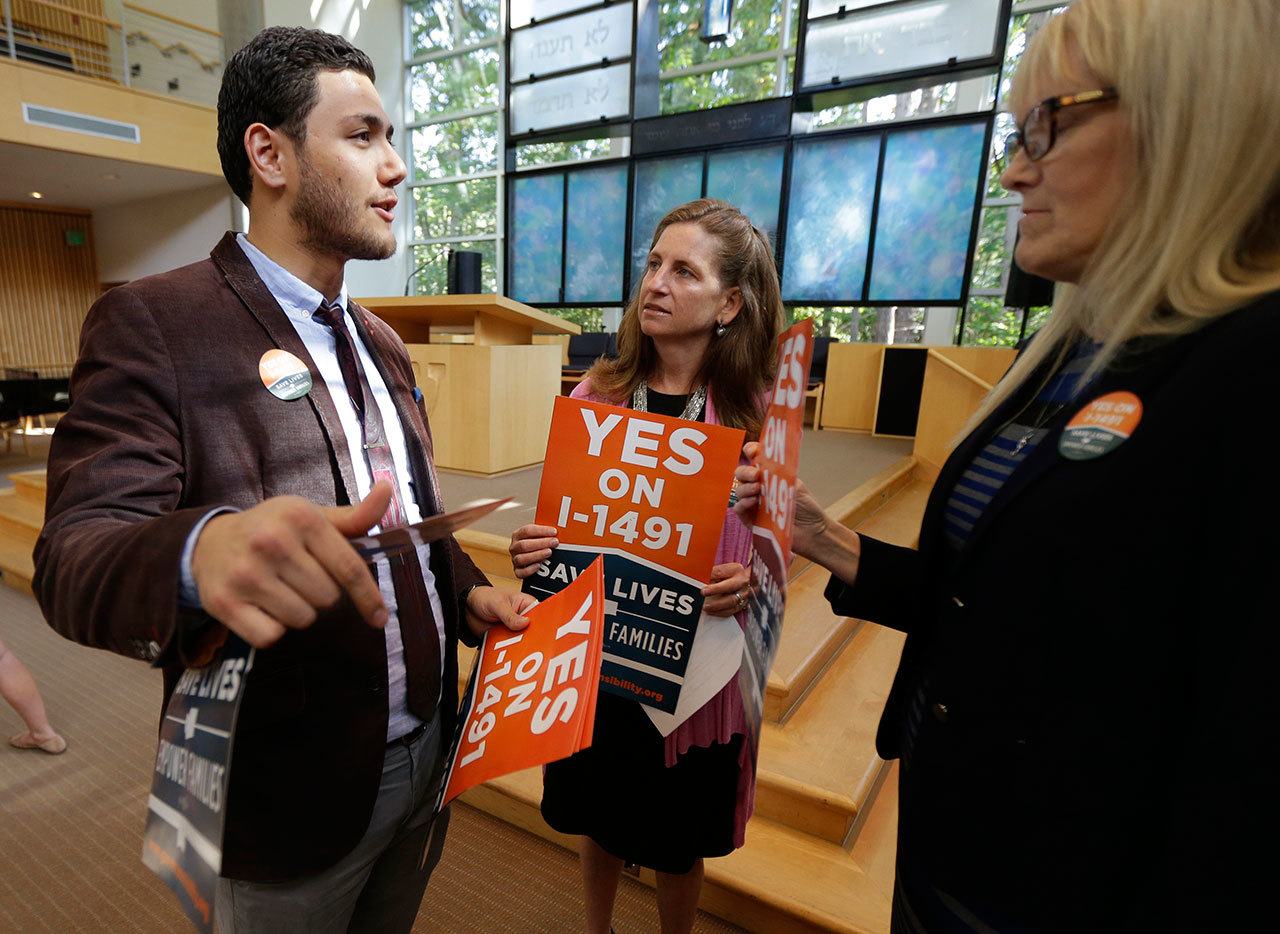By Martha Bellisle
The Associated Press
SEATTLE — The citizen sponsor of Washington state ballot Initiative 1491 believes her son and daughter would still be alive if “extreme-risk protection orders” had been legal two years ago.
When Marilyn Balcerak’s mentally ill son became increasingly violent and potentially suicidal, she repeatedly asked the police how she could keep guns out of his hands. She was told she could get a restraining order or wait until he committed a felony, which would make it illegal to buy a firearm.
But he legally purchased a firearm at a local Fred Meyer and killed his stepsister and then himself.
“I was powerless to stop it,” Balcerak said. “If extreme-risk protection orders had been law two years ago, James would never have been able to buy that gun.”
I-1491 would allow family members and law enforcement to petition a judge to temporarily suspend a person’s access to firearms if the court finds that he is a threat to himself or others.
The “extreme-risk protection orders,” modeled after domestic violence restraining orders, would require a court hearing and due process protections to remove guns from a person in crisis.
Opponents fear the protection orders could be misused by vindictive ex-partners.
“There is a concern that this kind of legislation is open to abuse by people who make a complaint in a divorce case or ex-girlfriend, ex-boyfriend, that sort of thing,” said Dave Workman with the Bellevue-based Second Amendment Federation. “I think we have to be sensitive to that.”
The National Rifle Association’s Institute for Legislative Action urged members, their family and friends to vote “no” on I-1491 in November.
The group said it has seen similar legislation “pop up in multiple states in recent years and the proponents are always the same: anti-gun legislators and gun control groups who are intent on targeting gun owners instead of preventing crime.”
The group behind the initiative, the Alliance for Gun Responsibility, had raised almost $3.6 million for the campaign, according to state disclosure reports.
Backers of the initiative cite a list of shootings that could have been avoided with the use of an extreme-risk protection order.
Survivors and family members of people killed in the 2006 mass shooting at the Jewish Federation of Greater Seattle, the 2012 shooting at Seattle’s Cafe Racer and the 2014 shooting at the University of California Santa-Barbara say an extreme-risk protection order could have stopped the killings.
The California shooting resulted in the passage of a version of the protections orders in 2014.
A study released last month by the Educational fund to Stop Gun Violence said in Washington state there are nearly two firearm deaths each day. In 2014, there were 702 gun deaths and 551 were suicides, the group said.
Similar laws passed in other states have saved lives, according to the Alliance for Gun Responsibility, the initiative backers.
Connecticut passed its law in 1999, and since that time, 762 risk-warrants were issued. Police found firearms in 99 percent of the cases and removed an average of seven guns per subject, the group said. In about 60 percent of those cases, suicide or self-injury were listed as the concern.
“Given that 762 risk-warrants were issued through 2013, this means that an estimated 38 to 76 more people are alive today as a result of risk-warrants in Connecticut,” the group’s report said.
Josh Horwitz, the executive director of the group, said extreme-risk protection orders will keep Washingtonians safe “by separating those most at risk of dangerous behavior from deadly weapons.”
